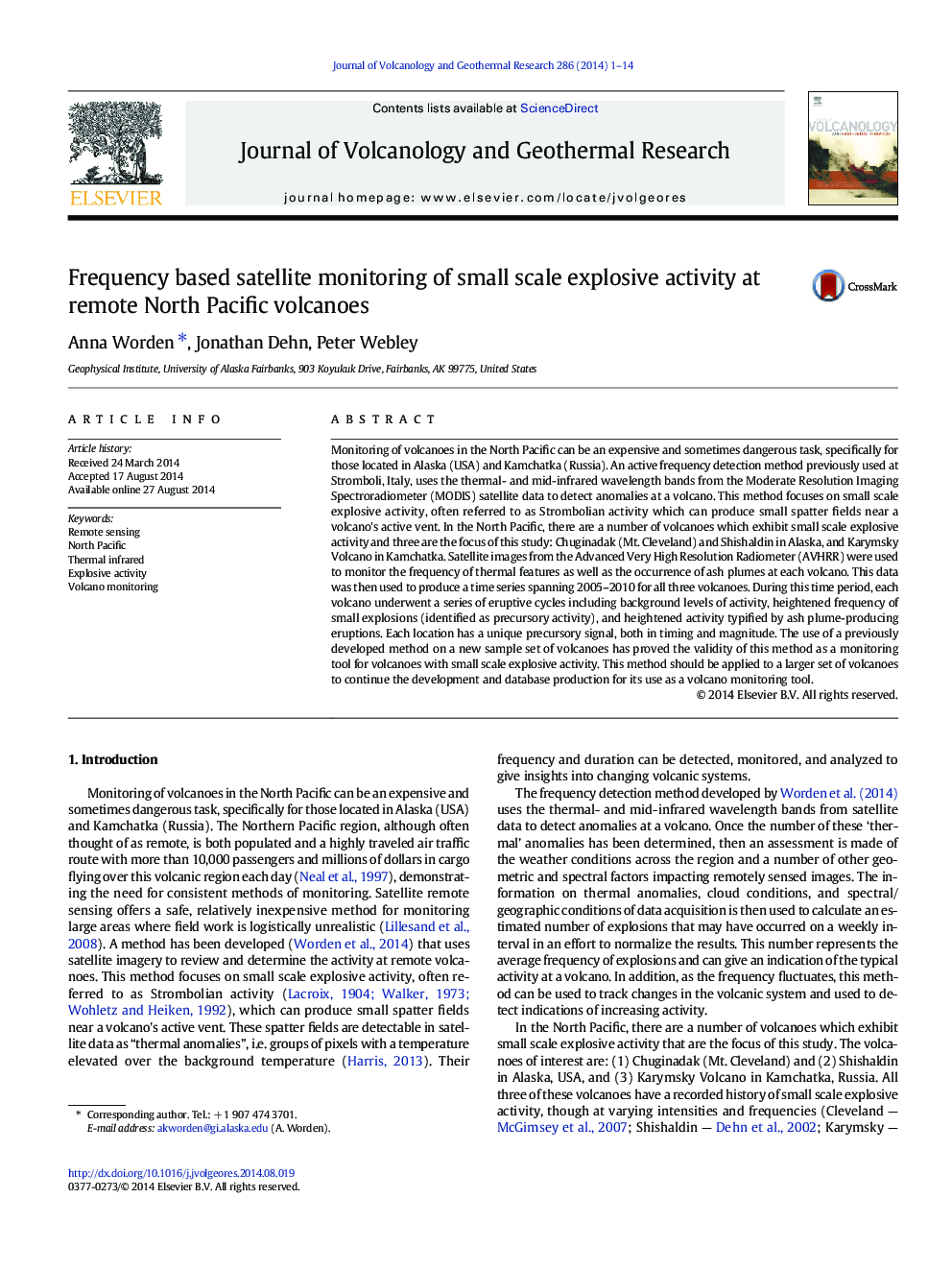| کد مقاله | کد نشریه | سال انتشار | مقاله انگلیسی | نسخه تمام متن |
|---|---|---|---|---|
| 6439651 | 1638336 | 2014 | 14 صفحه PDF | دانلود رایگان |
- Monitoring method applied to remote volcanoes in the North Pacific
- Satellite remote sensing used to determine frequency of small explosions
- Trends in frequency of explosions and precursors to large eruptions are detected.
- Relationship between thermal activity and plumes can highlight precursors.
- Relationship between thermal activity and plumes can hint at eruptive source.
Monitoring of volcanoes in the North Pacific can be an expensive and sometimes dangerous task, specifically for those located in Alaska (USA) and Kamchatka (Russia). An active frequency detection method previously used at Stromboli, Italy, uses the thermal- and mid-infrared wavelength bands from the Moderate Resolution Imaging Spectroradiometer (MODIS) satellite data to detect anomalies at a volcano. This method focuses on small scale explosive activity, often referred to as Strombolian activity which can produce small spatter fields near a volcano's active vent. In the North Pacific, there are a number of volcanoes which exhibit small scale explosive activity and three are the focus of this study: Chuginadak (Mt. Cleveland) and Shishaldin in Alaska, and Karymsky Volcano in Kamchatka. Satellite images from the Advanced Very High Resolution Radiometer (AVHRR) were used to monitor the frequency of thermal features as well as the occurrence of ash plumes at each volcano. This data was then used to produce a time series spanning 2005-2010 for all three volcanoes. During this time period, each volcano underwent a series of eruptive cycles including background levels of activity, heightened frequency of small explosions (identified as precursory activity), and heightened activity typified by ash plume-producing eruptions. Each location has a unique precursory signal, both in timing and magnitude. The use of a previously developed method on a new sample set of volcanoes has proved the validity of this method as a monitoring tool for volcanoes with small scale explosive activity. This method should be applied to a larger set of volcanoes to continue the development and database production for its use as a volcano monitoring tool.
Journal: Journal of Volcanology and Geothermal Research - Volume 286, 1 October 2014, Pages 1-14
